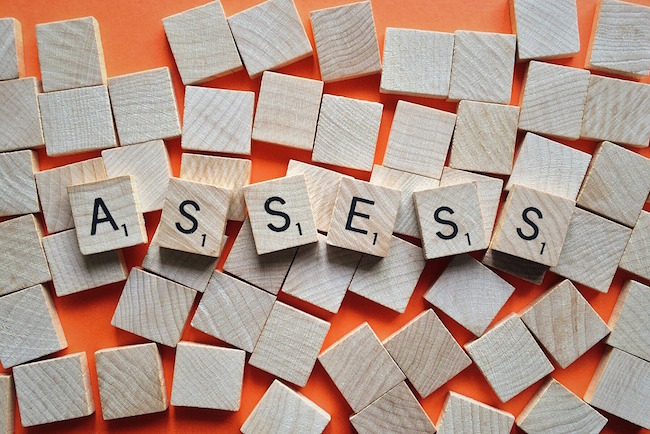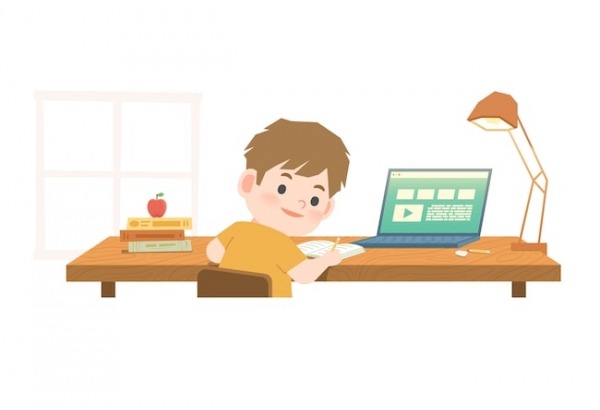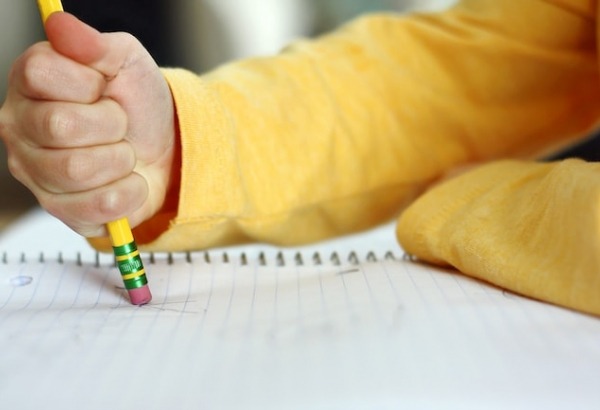How do they test for dyslexia?

Dyslexia is a language based specific learning difference that can affect reading, writing and spelling skills. There are different approaches to testing, including online screening forms – such as the Lexercise or Beating Dyslexia tests – but these measures are only meant to provide guidance as to whether or not a more in-depth assessment is needed. Sometimes a teaching assessment will suffice, but a comprehensive evaluation of dyslexia is typically undertaken by a speech and language/pathologist, educational psychologist or trained expert and is diagnostic in nature to provide a clearer picture of how the dyslexia affects an individual’s ability to learn.
Most evaluations test phonemic awareness, ability to rapidly name objects and letters, decoding skills, fluency in reading, comprehension skills, and writing and spelling ability. Testing can sometimes extend to oral language skills, intelligence and checks for visual and hearing impairment, both of which can have a severe impact on language development. In certain cases a child may be referred for more testing, particularly if additional learning difficulties such as dysgraphia or ADHD are suspected.
Parents can ask to meet with a school’s Special Education Needs Coordinator (SENCO) or speak with their child’s teacher to request an assessment. School administered evaluations cover language development, vocabulary, reading, writing, spelling, memory, problem-solving, processing speed, organizational skills and learning style and will often include observations from teachers. Outside independent evaluations can also be done but may be quite expensive.
Nonetheless, it’s important that formal testing be undertaken so a child or adult can qualify for support. Adults who suspect they are dyslexic may be able to request a professional assessment through their workplace or contact a dyslexia association for guidance on finding a private testing center. Learn more about adults with undiagnosed learning difficulties and where to find support for adult dyslexia in these posts.
When dyslexia is not caught early on it can cause a child to struggle in the classroom, fall behind his or her peers and experience feelings of frustration and low self-worth, which can lead to a lack of confidence and low self-esteem. However, with diagnostic testing, educators can provide the right coping strategies and ensure appropriate accommodations that enable every learner to achieve his or her full potential. Learn more about strategies for dyslexic learners and choosing the right classroom accommodations.
Can dyslexia be diagnosed?
A major difference between dyslexia and a medical condition is that a doctor can diagnose the latter, but the former must be evaluated by a qualified language professional. That’s because dyslexia is not a disease and there is no one size fits all description of it. In fact, the standards for identifying dyslexia vary from country to country – and so does the way society refers to and classifies it.
For example, in the US dyslexia is branded a learning disability whereas in the UK and EU it is more common to hear it called a learning difficulty or a specific learning difference. The difference between these terms is subtle but significant as learning disability implies the child is handicapped in some way, learning difficulty suggests there is a learning challenge (which can be overcome), and learning difference underscores that the child learns in a different way from the majority of the population.
Having dyslexia does not need to be viewed as a negative; dyslexia is simply the brain processing language in a non-neurotypical way. Dyslexics are not less intelligent than the rest of the population, on the contrary, many are highly skilled and intelligent children and adults who excel at problem solving and creative thinking – some are even considered gifted. That’s why it may be useful to think about diagnostic testing as showing you more than just your weaknesses – it can also highlight your strengths.
Learn more about the strengths associated with dyslexia and motivational quotes from famous individuals who have overcome the challenges posed by their dyslexia.
What does dyslexia look like?
No two individuals with dyslexia will experience the same set or severity of symptoms. Nonetheless, a child with phonological dyslexia is typically a bright and intelligent young learner who struggles with reading and writing because of difficulty breaking words down into their component sounds. This in turn affects decoding and encoding skills. Reading out loud can be poor, as can be recognition of familiar vocabulary. Dyslexic learners take longer to get through a text, may need to read something several times, and can have trouble understanding what they’ve read.
Spelling skills are often inconsistent with a child spelling a word correctly one day and incorrectly the next. There can be particular difficulty in getting the right set of letters in the right order. In handwriting a child with dyslexia is more likely to reverse letters and there may be a disparity between the size of their spoken and written vocabulary.
The key difference between a child who does not have dyslexia and one who does is that for the dyslexic learner putting in more effort and time will not necessarily lead to greater results if they have not acquired the appropriate coping strategies. Learn more about identifying dyslexia in this post.

Different tests for dyslexia
Here are some frequently used tests. The list is meant to be illustrative rather than definitive.
Online Screening
In an online parent-administered test, a child will be asked to read words aloud and split them by syllables. There may be some naming or spelling based questions and a parent will typically need to record the responses given and then enter the child’s age and grade level. This kind of test will tell you if a need for further testing is indicated but is not sensitive enough to provide any further guidance.
Diagnostic Testing
This kind of testing involves several different measures which can take up to four hours to administer for children and eight hours for adults. Every evaluation is slightly different and you may want to request an overview of the process before you begin, so you know which tests will be used and what to expect. Keep in mind test instruments will be age-appropriate, meaning they will differ for children and adults. As dyslexia can be hereditary, you may be asked to provide an in-depth family history. In mature learners, an educational history may also be taken.
- The Peabody Picture Vocabulary Test checks a child’s receptive vocabulary by presenting images that they need to name. It begins with high frequency words and transitions to lower frequency words as the test goes on. This is done to estimate the size of a child’s vocabulary. As vocabulary growth typically comes from reading, a learner who is struggling to read because of dyslexia may have a smaller vocabulary than his or her peers.
- The Comprehensive Test of Phonological Processes and the Sound Blending section of the Woodcock-Johnson III test can be used to look at how well an individual is able to identify the sounds that make-up words. For example, a child may be given the word boat and asked to give the sound if the first letter is removed. Learn more about phonemic awareness.
- The Rapid Automatized Naming Test provides a child with different cards and asks the learner to quickly name colors and objects - letters and numbers too for older children - measuring accuracy and time taken. This is because research has shown that fast recognition and naming ability is related to decoding skills.
- The Gray Oral Reading Test and Reading Fluency Test of Woodcock-Johnson III ask kids to read words aloud and then measure performance accuracy and the total time taken. Some feature pseudo-words, which force a child to decode vs. sight-read. This is because it’s impossible for the children to already be familiar with the pseudo-words.
- The Test of Written Language looks at a child’s productive writing ability in terms of their skills in constructing a narrative, accuracy in spelling and the scope and accuracy of their grammar knowledge.
- The Clinical Evaluation of Language Fundamentals Test measures oral language skills.
Additional tests may be constructed to measure reading fluency and decoding ability in a sentence or paragraph-level text. This is because context driven reading vs. reading isolated vocabulary is more akin to what happens in the classroom.
What happens after the testing?
It can take a few weeks to get the results of a comprehensive evaluation as performance on multiple tests needs to be measured, calibrated against age and grade-level and compared with observations from parents and teachers, as well as the test administrator. Results are normally presented within a larger report and can contain a lot of jargon and technical vocabulary along with recommendations.
If you’re not given the opportunity to discuss the results, you should be able to reques a follow up meeting where you can bring up any questions you might have. Keep in mind dyslexia assessment is never 100%. The evaluation will tell you if there is a low, medium, or high chance that a child is dyslexic. It will also likely reveal which areas are most affected, which makes it easier to put together an action plan to help your child get the support he or she needs.
How typing can provide support
One of the most commonly recommended accommodations for school-age learners 7+ who are diagnosed with dyslexia is using a computer to take notes, complete homework, and even take quizzes and tests. The Touch-type Read and Spell course is an online phonics based program that helps dyslexic students learn how to touch-type. This makes using a computer faster and more efficient.
The course presents wordlists to strengthen phonemic awareness and boost reading and spelling skills at the same time. Keyboarding is particularly useful for dyslexic students as it allows spelling to be learned as a series of muscle movements. Discover more about the benefits of touch-typing for dyslexics.
The TTRS program takes an Orton-Gillingham, multi-sensory, and modular approach in which every learner can proceed at a pace that is right for him or her. Words are presented on the screen, played aloud and typed, which combines sensory input to enhance learning.
Repetition reinforces material in memory and the interface is straightforward to allow kids, young-adults and mature learners to work through lessons independently. Moreover, performance is accuracy-based to encourage, motivate and raise confidence for learners of all ages.
For learners who struggle with dyslexia
TTRS is a program designed to get children and adults with dyslexia touch-typing, with additional support for reading and spelling.
Chris Freeman
TTRS has a solution for you
An award-winning, multi-sensory course that teaches typing, reading and spelling

How does TTRS work?
Developed in line with language and education research
Teaches typing using a multi-sensory approach
The course is modular in design and easy to navigate
Includes school and personal interest subjects
Positive feedback and positive reinforcement
Reporting features help you monitor usage and progress














